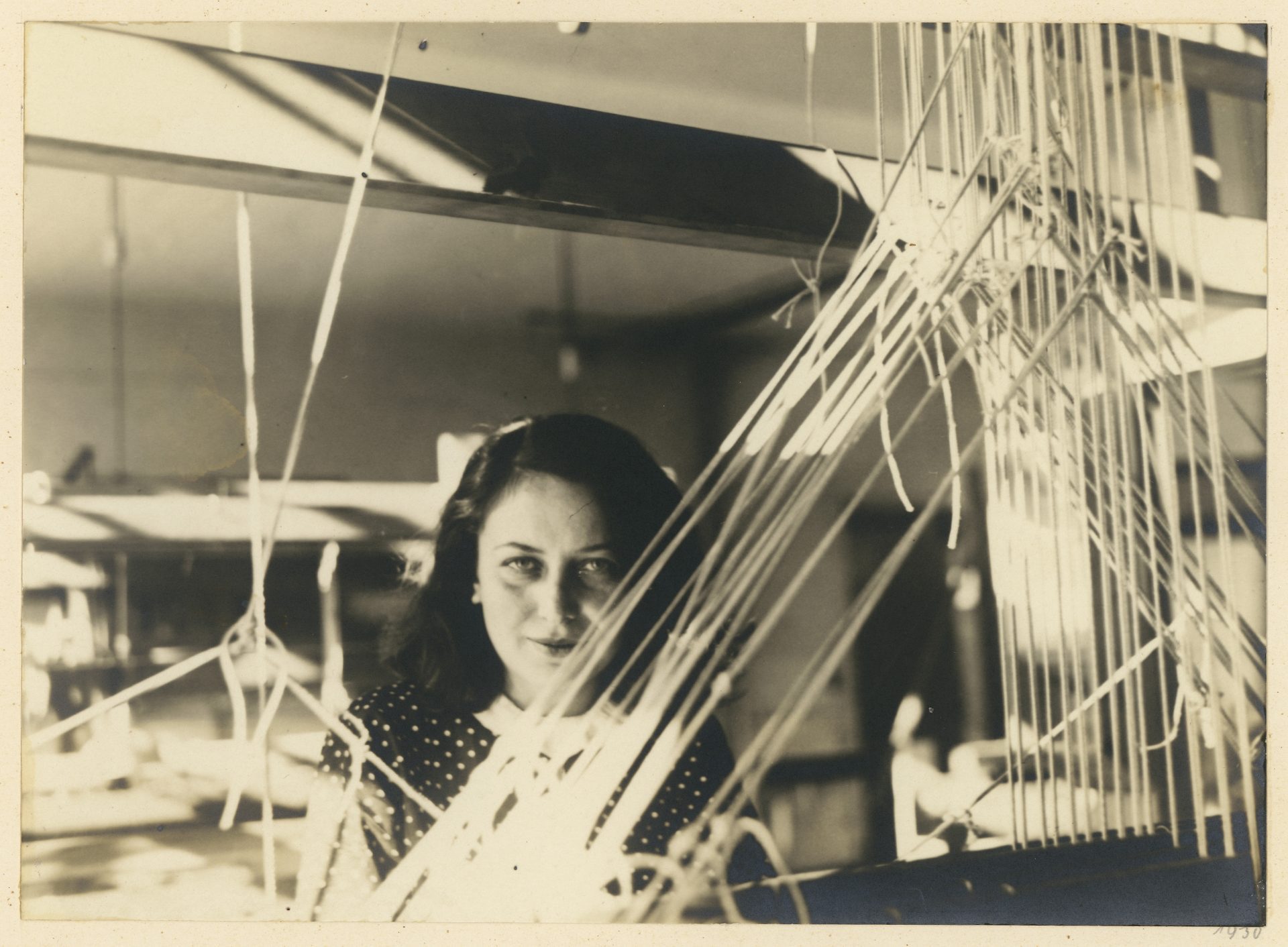Otti Berger: Fabrics in Space
Nonumy eirmod tempor invidunt ut labore et dolore magna aliquyam erat, sed diam voluptua. At vero eos et accusam et justo duo dolores et ea rebum. Stet clita kasd gubergren, no sea takimata sanctus est.

Lorem ipsum
-
In August 2020, artist and art historian Judith Raum began working with the Bauhaus-Archiv / Museum für Gestaltung on research into the work of Otti Berger. As a result of several artistic research projects on the textile workshop at the Bauhaus, Raum has become a specialist in Otti Berger’s work. In detective-like research and in dialogue with numerous international experts, Judith Raum confirmed the fabrics’ attribution to Otti Berger and determined their functions. She contextualised the designs and ultimately brought Berger’s textiles back to life through the medium of photography. Particular emphasis was placed on viewing Berger’s work from both a craft and an entrepreneurial perspective.
-
As a self-employed woman artist in the bustling metropolis of Berlin of the early 1930s, Otti Berger created fabrics which radically changed people’s notions of what textiles could be and do. She produced curtains, rugs, floor coverings and upholstery designs in close collaboration with modernist architects, such as Ludwig Hilberseimer and Hans Scharoun. She designed fabrics that appealed to the demands of modern consumers, and in so doing, redefined the interplay of aesthetics and function – with fascinating results that still impress us today for their aesthetic and functional qualities. -
This research project resulted in the book “Weaving for Modernist Architecture”, which was published by Hatje Cantz Publishers in 2024. It provides comprehensive access to the textile designer Otti Berger’s estate, which is scattered around the world (including the Bauhaus-Archiv collection). For the first time, this publication presents the complexity and beauty of her fabrics, clearly illuminating the immense importance of textiles for modernist interiors of the 1920s and 1930s. This connection has hardly been recognised by historians of architecture and design to this day. Berger’s impressive writings on textiles are also collected here for the first time. An installation by Judith Raum in the Temporary Bauhaus-Archiv presented the results of this research and two exclusive reweavings of Berger’s fabrics to a wide audience. -
Otti Berger (1898–1944) was one of the most influential woman textile designers of the 20th century. Born in Zmajevac, Croatia, which at the time belonged to the kingdom of Hungary, Ottilija Ester Berger attended the School of Arts and Crafts in Zagreb from 1921 to 1926, before enrolling at the Bauhaus in Dessau in 1927. After completing her training programme and working for a time as an instructor at the Bauhaus, she launched her freelance career in Berlin in 1932. She designed fabric collections for modernist interior design throughout Europe. In 1936, she was banned from working professionally on account of her Jewish faith. Her attempt to escape to England and the United States failed. In 1944, she was arrested in Croatia and deported to Auschwitz where she was murdered.

